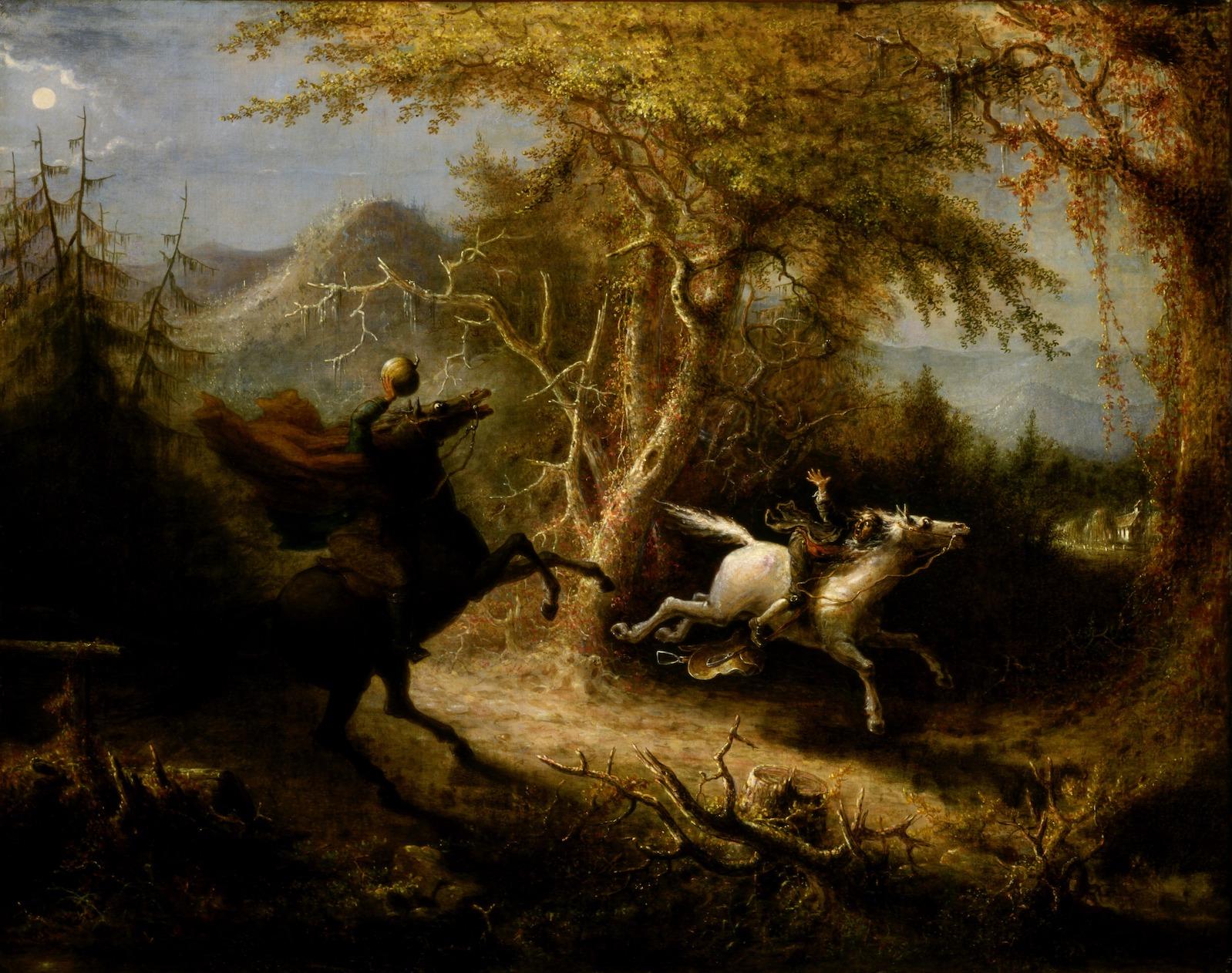The October 2021 Focus for Reframed is Ghoulish
As a child in school, reading and discussing Washington Irving’s 1820 short story, The Legend of Sleepy Hollow, always seemed like a trick teachers were playing on us students.
The protagonist, Ichabod Crane, is a town’s weakling schoolteacher in upstate New York, who is literally chased out of town by Brom Bones, a philistine resident competing with Crane for the affections of the wealthy and young Dutch immigrant Katrina Van Tassel.
None of the characters is particularly likable; Brom is a lout, Katrina is a snob and Ichabod is generally incompetent, but one always gets the feeling that teachers want us to sympathize with Ichabod and, in doing so, have some sort of blanket sympathy for teachers in general, including those as incompetent as Ichabod.
As shown in John Quidor’s 1858 painting in the Smithsonian, Brom disguises himself as a decapitated ghost, carrying a pumpkin that Ichabod believes to be his cut off head, the reason why the story is so often associated with Halloween. Quidor is rather generous to Ichabod, showing him riding bareback whereas in Irving’s telling, Ichabod is so incompetent that his saddle falls off his horse during Brom’s pursuit.
Upon its creation, Quidor’s painting was widely panned by art critics for being too dark and focusing more on the woodland nature around the two men than on the chase itself. In many ways, however, this was a clever choice by Quidor, whose perspective reveals the two men for what they are: immature characters fighting over a young woman who is attracted to neither of them. The horses in the painting are also anatomically inaccurate, a topic this column has previously addressed in art.





























